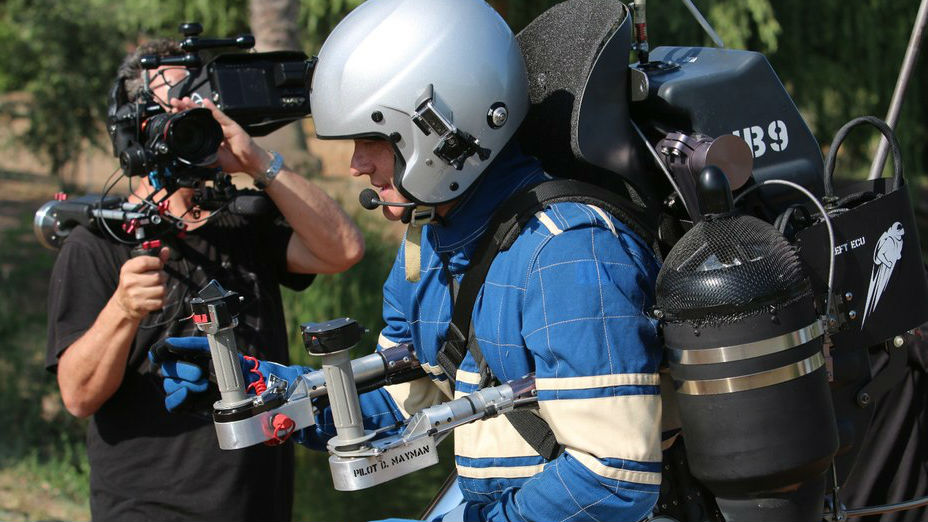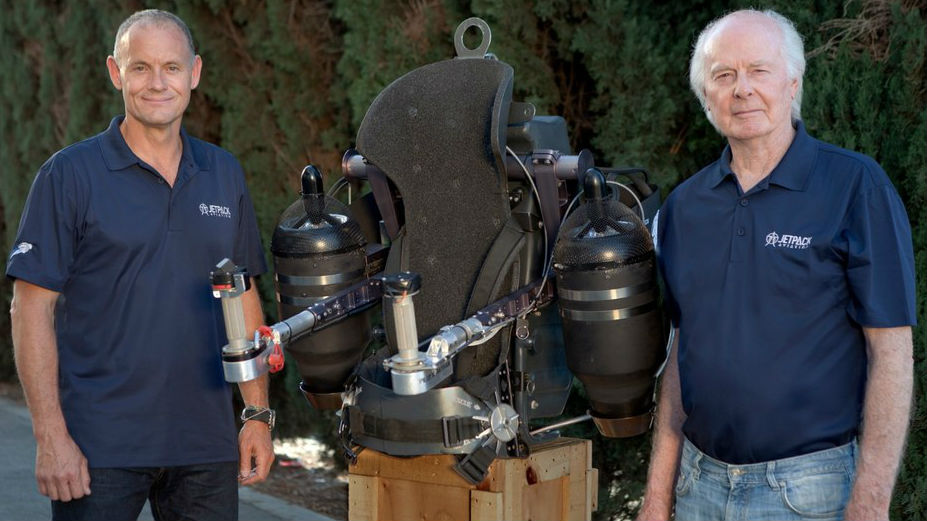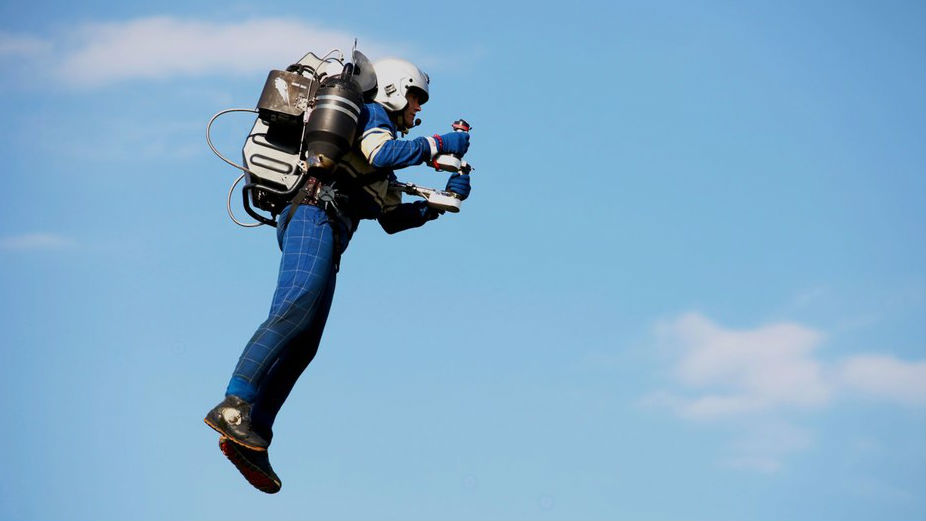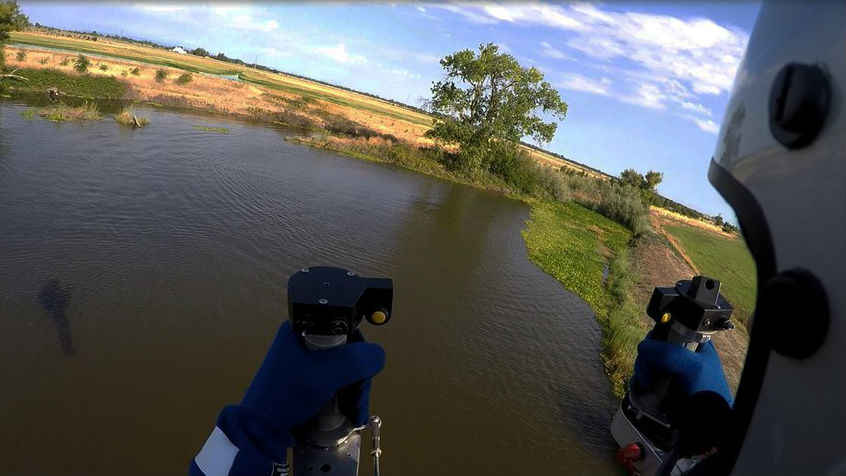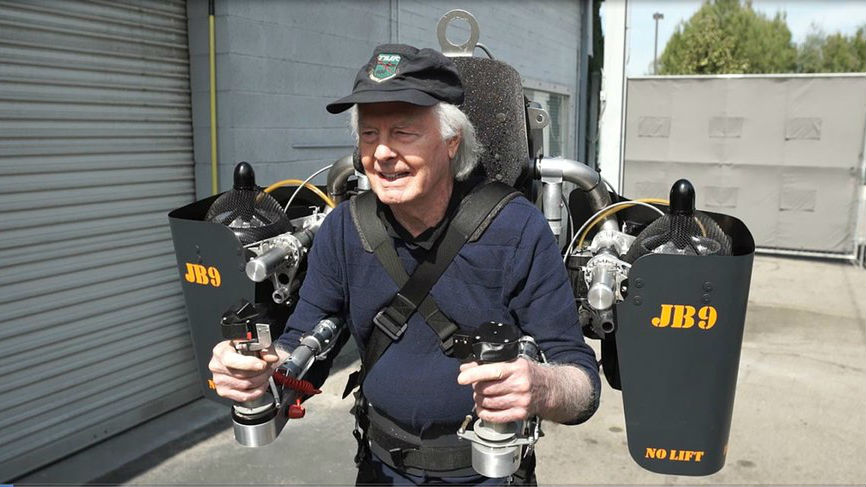More than 40 years in the making, the JB-9 is supposedly the smallest and lightest jetpack ever made. It fits the standard definition of a jetpack — a flight system that mounts jet engines onto a backpack-like frame. Unlike competing jetpacks that are large and cumbersome to wear, the JB-9 can be stored in the trunk of car and easily worn for flight. It lightweight frame and easy operation propels the JB-9 ahead of the competition, which often have limitations such as a plane-based takeoff or adequate wind for flight.
Despite its small size, the JB-9 jetpack still packs a punch. It uses two vectored jet turbine engines that allow for vertical takeoff and landing, and even has enough power to lift an operator over 10,000 feet a feet into the air, with an initial climb rate of 500-1000 feet per minute. The JB-9 can fly at speeds greater than 100 MPH with a flight time of approximately 10 minutes, depending on the operators’ weight.
The JB-9 is the brainchild of Australian businessman David Mayman and Nelson Tyler, who began working together ten years ago. Tyler has extensive experience with jetpack technology, having worked on the historic Rocketbelt that demoed during the 1984 Olympics. Using what they learned from the Rocketbelt, the team refined their jetpack as technology improved. The creation of the JB-9 was an arduous process, though, and included several different iterations, repeated testing, and multiple redesigns.
Now that the JB-9 has been approved for flight by the FAA and US Coast Guard, the company is looking for ways to improve the jetpack. The team would like to add an auto stability system, a parachute safety system, and improved engine technology. The company hopes to eventually release a JB-series Jetpack to the consumer market, but there is currently no projected timeframe for launch.
